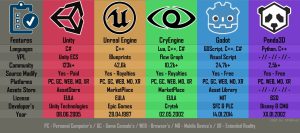
In recent years, the integration of gaming and education has gained significant attention as educators explore innovative ways to enhance the learning experience. Simulations, a key component of modern gaming, are becoming increasingly popular in educational settings. By utilizing simulations, educators can create immersive and interactive virtual environments that provide students with valuable opportunities to learn and apply knowledge in a realistic context.
The Benefits of Simulations in Education
Simulations offer several advantages when it comes to learning in the academic environment:
Active Engagement: Instead of passive learning, simulations encourage active participation, requiring students to make decisions, solve problems, and interact with the virtual environment. This active engagement stimulates critical thinking and improves knowledge retention.
Real-World Application: Simulations provide a bridge between theoretical concepts and real-life situations by simulating scenarios that students are likely to encounter in their chosen field. This hands-on experience helps students gain practical skills essential for their future careers.
Personalized Learning: Through simulations, students can explore and learn at their own pace, offering personalized learning experiences that cater to individual strengths and weaknesses. The interactive nature of simulations allows for immediate feedback, helping students identify areas of improvement.
Collaboration and Social Skills: Many simulations include multiplayer features, enabling students to collaborate, problem-solve, negotiate, and communicate effectively within a virtual team setting. These interactions mimic real-world scenarios, enhancing teamwork and social skills.
Examples of Simulations in Education
Simulations can be applied across various educational disciplines, fostering an engaging and effective learning environment. Here are a few examples:
Medical Simulation: Medical schools often incorporate simulation-based training to help students practice clinical skills and decision-making in a risk-free environment. Simulators allow students to simulate surgeries, patient diagnoses, and emergency procedures, refining their medical knowledge and enhancing their confidence.
Business and Entrepreneurship: Business schools leverage simulations to simulate real-world business scenarios, such as managing a company, making financial decisions, and analyzing market trends. This approach enables students to test their knowledge, evaluate the consequences of their decisions, and learn from their experiences.
Engineering and Architecture: Simulations provide students with opportunities to design, build, and analyze structures and systems. Whether it’s simulating the construction of a bridge or testing the impact of environmental factors on a building, engineering and architecture students can experiment and learn from virtual models.
Language Learning: Virtual reality simulations are increasingly being used to enhance language learning. These simulations allow students to practice conversational skills with virtual characters, visit simulated cultural contexts, and experience real-life scenarios that facilitate language acquisition.
The Future of Simulations in Education
The integration of simulations in education is an ever-evolving field. As technology continues to advance, the potential for simulations to revolutionize the learning experience is vast. Immersive technologies, such as virtual reality and augmented reality, are already gaining traction, offering even more realistic and interactive educational simulations.
Simulations have the capacity to transform traditional education into a more engaging, personalized, and practical experience for students.
Additionally, the gamification of education, incorporating game-like elements such as achievements, leaderboards, and rewards, further enhances the learning process by increasing motivation and encouraging healthy competition.
With the growing interest and evidence supporting the efficacy of simulations in education, it is imperative for educators to embrace these technologies and incorporate them into their teaching methodologies. By doing so, we can empower students with the necessary skills and knowledge to thrive in an increasingly digital world.
Conclusion
Simulations are a powerful tool for bridging the gap between theory and practice in education. By leveraging the immersive and interactive nature of simulations, educators can provide students with engaging and personalized learning experiences across a range of disciplines. As technology continues to advance, simulations present an exciting avenue for transforming education and ensuring students are prepared for the challenges of the future.


